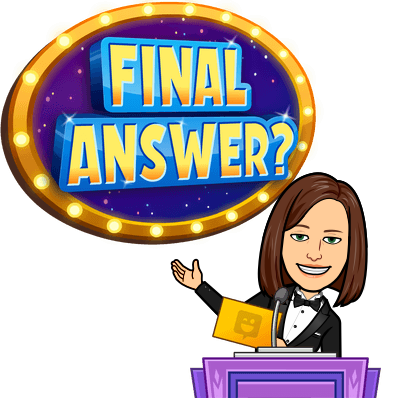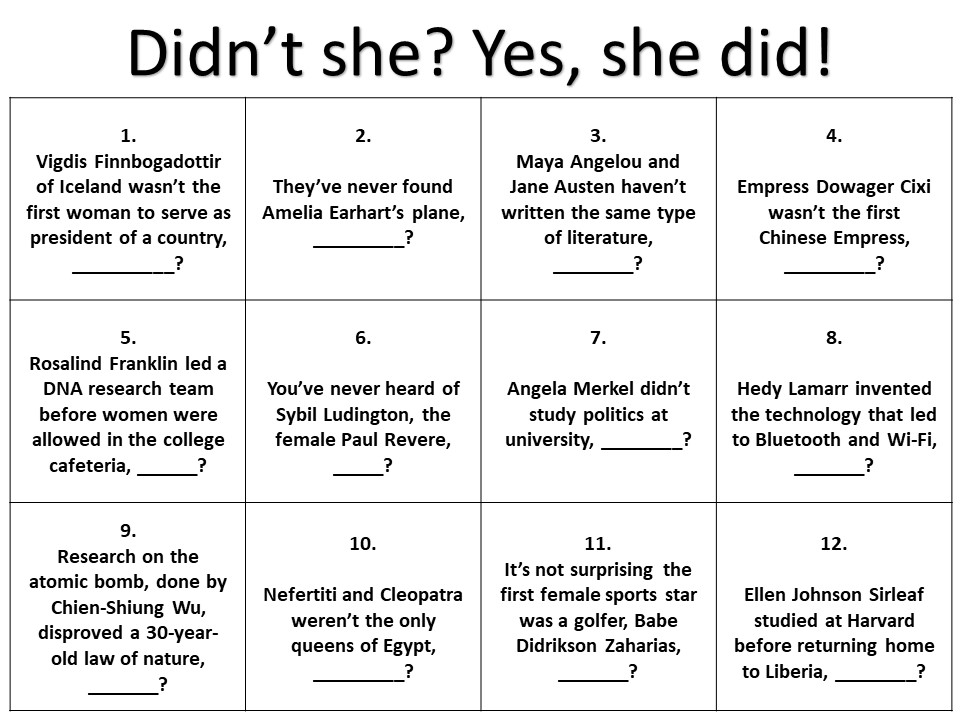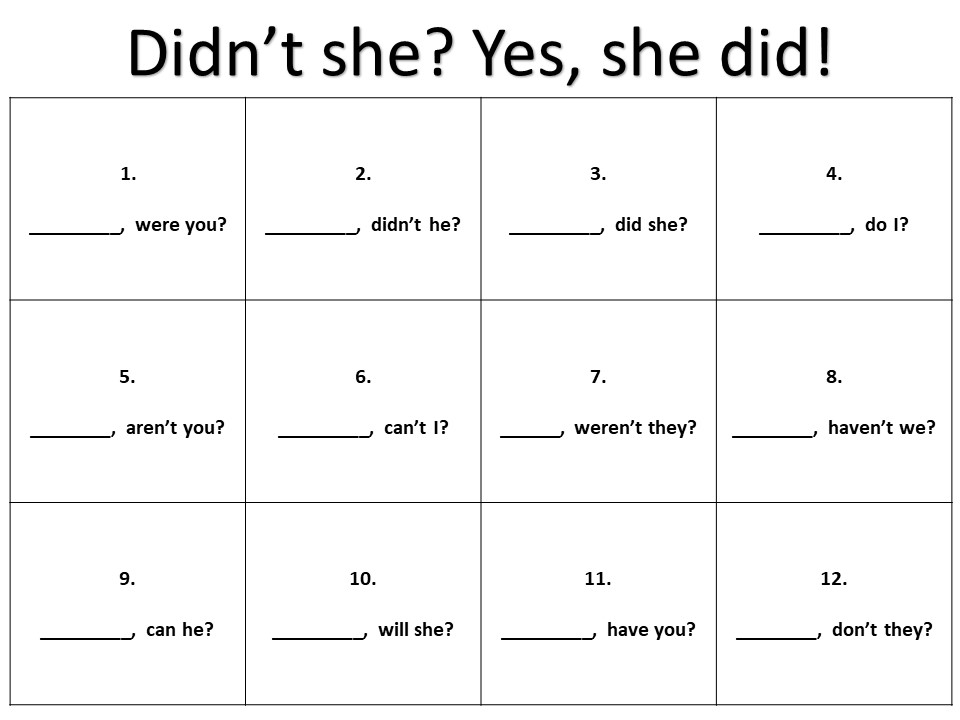
My students and I love playing games. We believe games make practicing every skill more fun, especially grammar. It’s not just my students, though. Recently, I subbed for another teacher, and since she gave me a lot of latitude in how I wanted to teach the skill, I took along a few games. Several students made it a point to stop and tell me how much they enjoyed the games.
One of our favorite games is Cover Up. The students like that it’s easy to learn, and the first person to take a turn doesn’t necessarily have the advantage. I like that it’s easy to make and very versatile. I couldn’t tell you how many different versions of the game I’ve made, but some of them are:
- Emotion Vocabulary
- Shape Vocabulary
- Frequency Adverbs
- Sentence Types (declarative, interrogative, exclamatory, imperative)
- Cause and Effect
- Present Perfect Tense
- Too vs. Enough
- Infinitives (noun + infinitive combinations)
- Imperatives (free download in the post!)
Many others exist, but I don’t want to take up the entire post listing them. Instead, I want to talk about a version to practice tag questions.
Tag Questions
I hate explaining tag questions to students. The explanation of the form and grammar always confuses my students, leaving them scared and unsure. I always preface the explanation with a warning that using tag questions is not as confusing or complicated as it seems, and many of them already use them correctly, but it rarely helps. So, I try to get through the grammar as quickly as possible and get into practice. By the end of practice, my students always felt confident about using tag questions but were rarely smiling. Why weren’t they smiling? They were bored! For years, I had no games for practicing tag questions, and the drill-and-kill worksheets quickly became very boring. One year, I’d had enough and decided to create a game. Thus, Didn’t She? Yes, She Did! was born.
I still begin our lesson with an explanation of the use and form of tag questions and a quick worksheet practice. You can download the handout I use for this from the left (on a computer) or just above (on a mobile device) this paragraph. I make this very quick, though, and we spend most of our time practicing the skill. We play two different versions of Tag Question Cover Up. The first version allows students to practice adding question tags to sentences, and the second asks them to create a sentence for a given tag question (a more challenging skill, in my opinion).
Practice One: Add a Question Tag
Since the theme of the unit we were studying at the time was strong women, all of my example sentences are about influential women in history. I tried to select women from around the globe, not just the USA, as well as a variety of historical eras. I have two different boards with twelve sentences each for a total of twenty-four different sentences. Some of the included sentences are:
- We read the Diary of Anne Frank in this class, _____________?
- Indira Gandhi was part of the movement for India’s independence from Britain, ________?
- Marie Curie made many contributions to science, _______?
- Maya Angelou and Jane Austen haven’t written the same type of literature, _________?
- Angela Merkel didn’t study politics at university, _________?
- Research on the atomic bomb, done by Chien-Shiung Wu, disproved a 30-year-old law of nature, ________?
As always, we can decide which version of Cover Up we want to play: complete cover or cover the most. In complete cover, each student gets his/her own board and tries to be the first to cover all twelve squares. In cover the most, two students share a board and try to have the most covers on the board at the end of the game. I’ve explained the rules in the past, but here’s a quick review:
Game Play Option One: Complete Cover (each student has his/her own board)
- Place students in groups of two.
- Pass out one board for each student, covers/markers for each student, and one die/set of dice for each pair.
- Student 1 rolls the number cube(s) and finds the corresponding square on his/her board.
- Student 1 either completes the provided sentence with a tag question or provides a starting sentence to match the provided tag question (depending on which game board you are using).
- If the sentence is grammatically correct, the student covers the square. If not, the square remains uncovered.
- Player 2 then takes his/her turn.
- If a player rolls the number for a previously covered square, he/she forfeits his/her turn.
- Play continues until one player has completely covered his/her board. Then, that player is the winner.
Game Play Option Two: Cover The Most (both students play on the same board)
- Place students in groups of two.
- Pass out one board for each pair, covers/markers for each student, and one die/set of dice for each pair.
- Student 1 rolls the number cube(s) and finds the corresponding square on the board.
- Student 1 either completes the provided sentence with a tag question or provides a starting sentence to match the provided tag question (depending on which game board you are using).
- If the sentence is grammatically correct, the student covers the square. If not, the square remains uncovered.
- Player 2 then takes his/her turn.
- If a player rolls the number for a previously covered square, he/she forfeits his/her turn.
- Play continues until the board is completely covered. The student with the most covers on the board is the winner.
Once again, I have two different boards, and we choose which version (complete cover or cover the most) to play. Often, we play the opposite version of whichever we just finished. This time, the board is filled with twelve different tag questions, such as:
- ______, were you?
- ______, can he?
- _____, can’t I?
- _____, weren’t they?
- _____, don’t they?
- _____, will she?
I generally don’t ask students to try to theme their sentences as the skill is already tricky enough. It is also fun to hear what they come up with! I’ve heard things such as, “The teacher won’t test us on this, will she?” or “Lionel Messi is the greatest footballer of all time, isn’t he?” Sometimes, I can’t help myself and jump in with the opposite answer to what they’re hoping for, such as, “Oh, yes, she definitely will test you on this!” It always produces a laugh and a few moments of conversation before they go back to playing.
Conclusion
It rarely takes more than one class period for my students to feel confident about using tag questions, and they almost always pass their quizzes/exams with flying colors. I just wish I was better at explaining the grammar of tag questions so we could avoid the initial panic and fear. If anyone has any tips, please let me know. Happy teaching, everyone!


